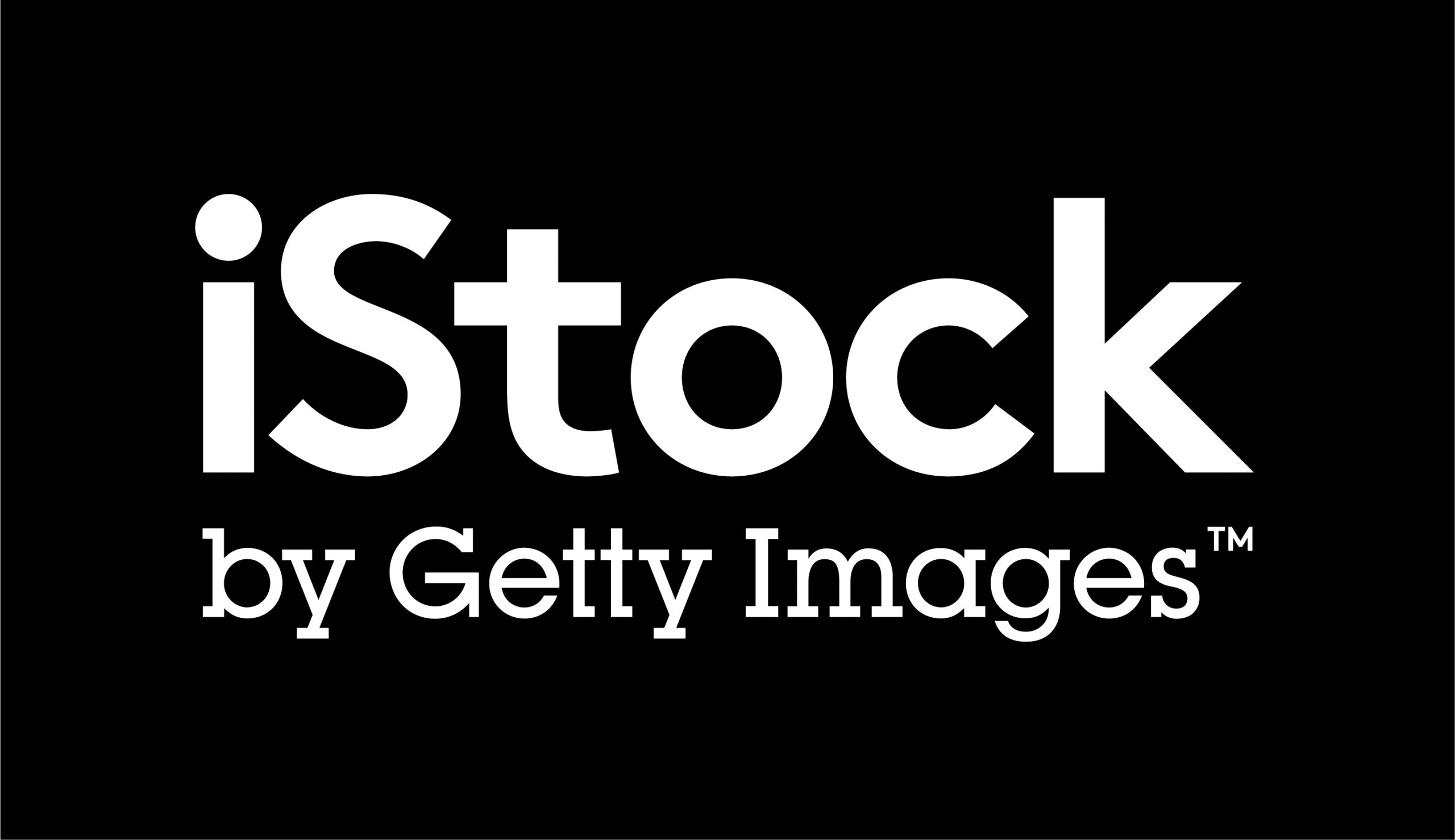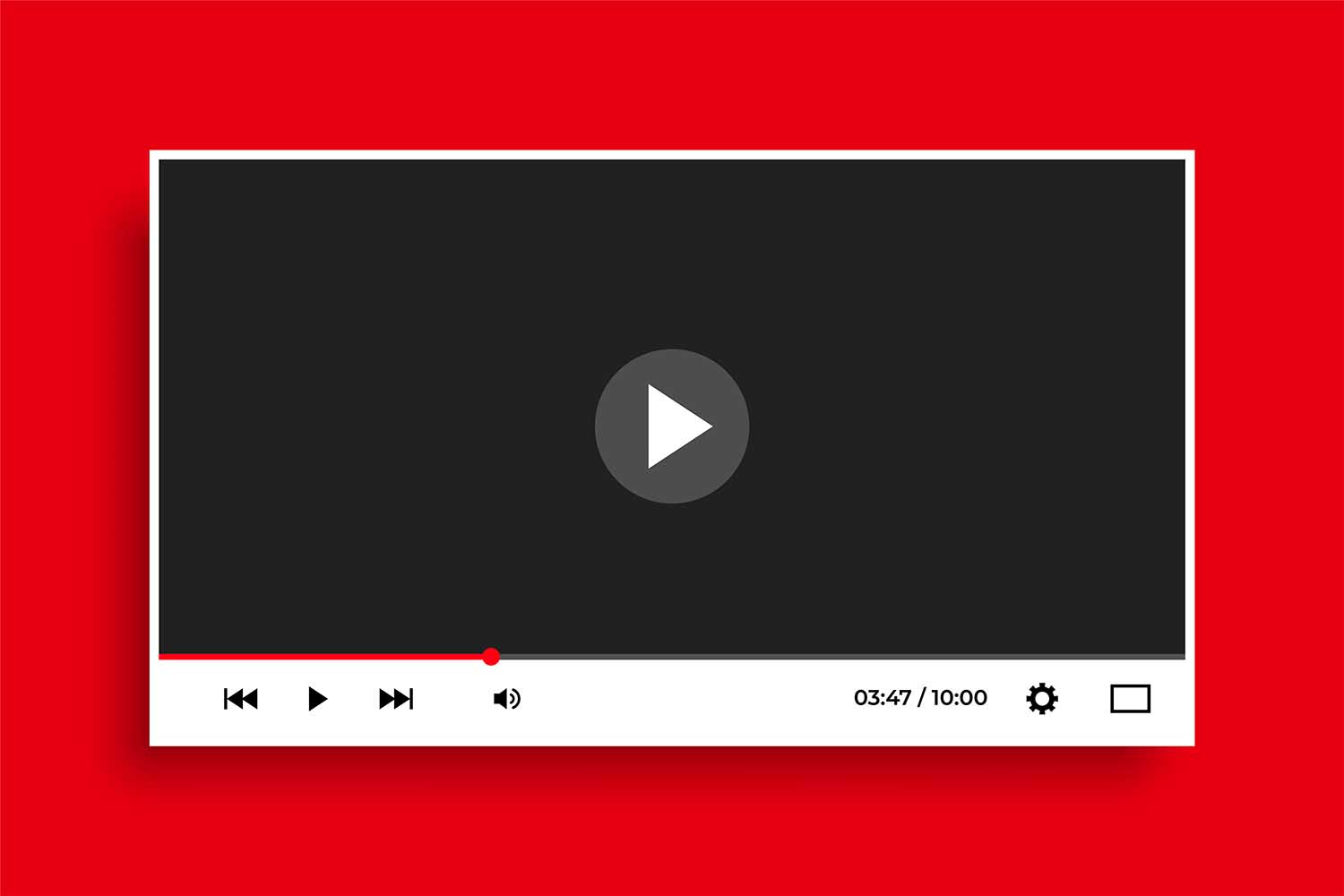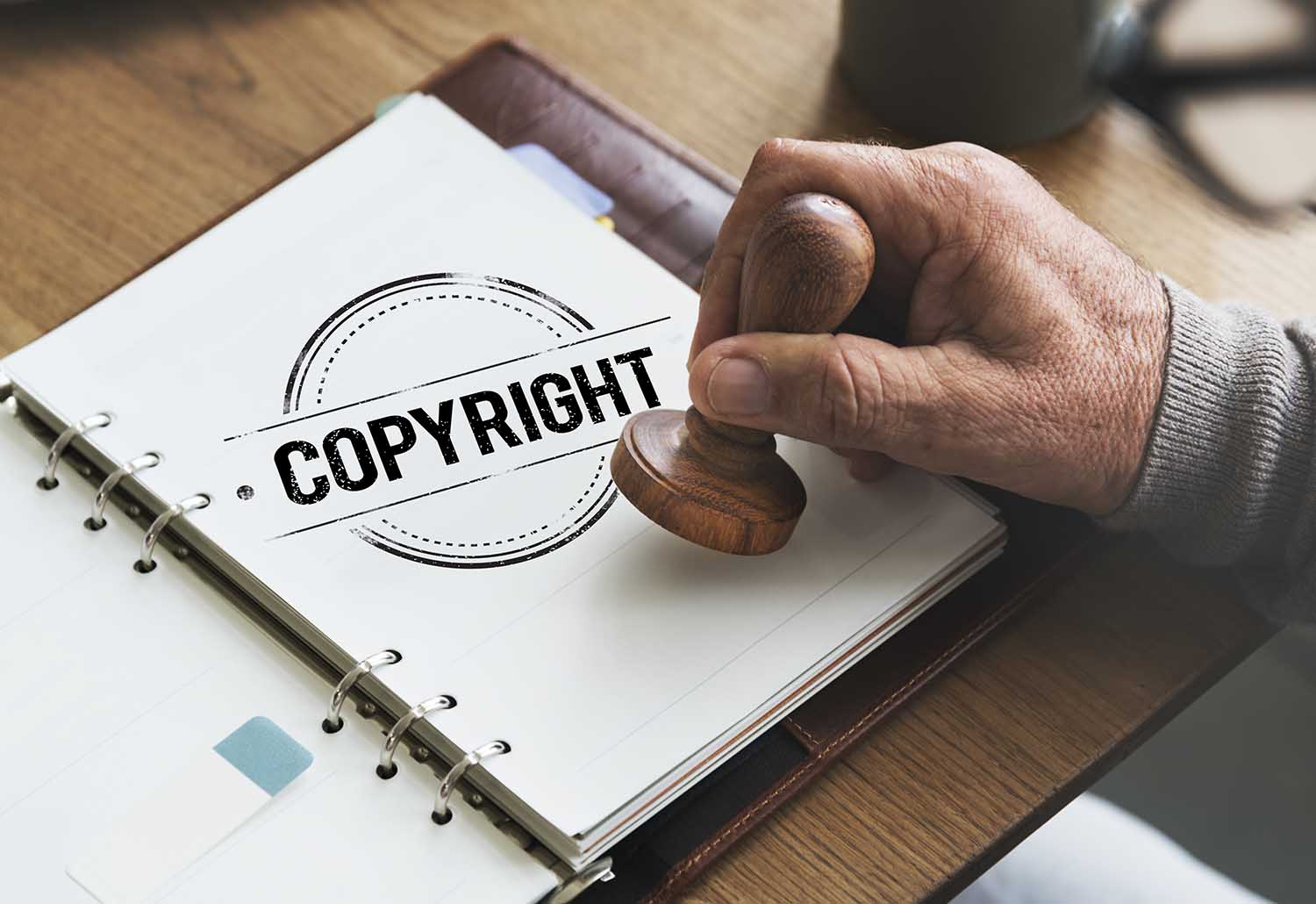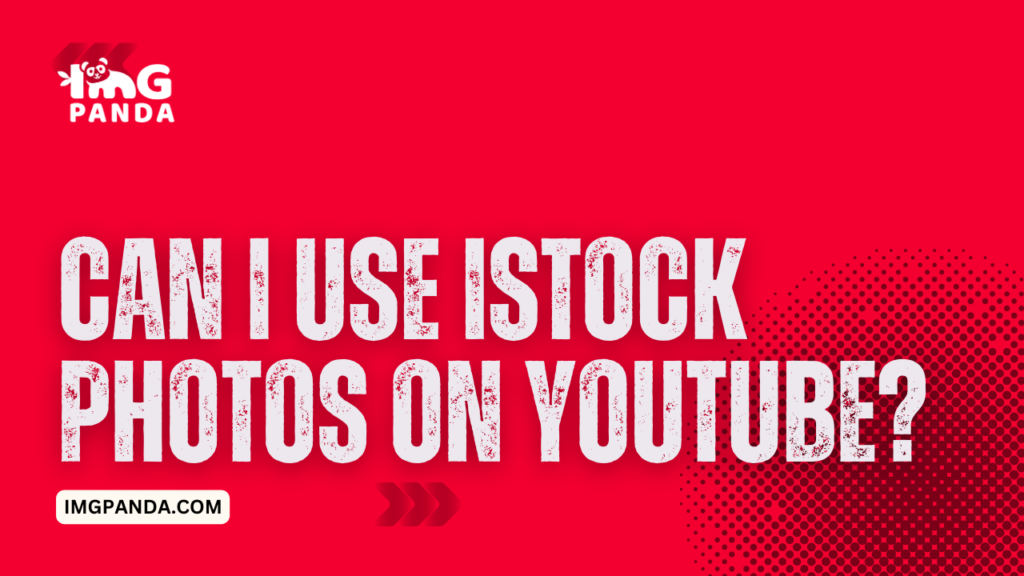Introduction
In the world of YouTube, visuals play a crucial role in engaging and captivating viewers. From captivating thumbnails to stunning background images, incorporating high-quality visuals is essential for creating compelling video content. One popular resource for finding such visuals is iStock, a well-known stock media platform. However, using iStock photos on YouTube requires a clear understanding of licensing requirements to ensure compliance with copyright laws.
This blog post aims to shed light on the licensing requirements for using iStock photos in YouTube videos. By understanding the different license types offered by iStock and how they apply to video content, creators can make informed decisions about utilizing these photos without infringing on intellectual property rights. So, let's dive into the world of iStock and unravel the guidelines for incorporating their photos into your YouTube videos.
Also Read This: Pixel Profits: Exploring How Much Money You Can Make on iStock
What is iStock?
A. Brief overview of iStock
iStock is a popular stock media platform that provides a vast collection of high-quality photos, illustrations, videos, and audio clips for various creative projects. It serves as a marketplace connecting content creators and artists, allowing them to license and utilize professional-grade visuals to enhance their work.
B. Variety of stock media available
iStock offers a diverse range of stock media options, catering to different creative needs. Its extensive library contains millions of images, illustrations, videos, and audio clips, covering a wide array of subjects and themes. From stunning landscapes and lifestyle photography to vector illustrations and cinematic footage, iStock provides a comprehensive selection of visuals to meet the demands of various video content genres.
C. Licensing options for different needs
To accommodate different usage requirements, iStock provides two primary licensing options: Royalty-Free and Extended License.
1. Royalty-Free License:
The Royalty-Free license is the most common option for most content creators. It grants non-exclusive rights to use the licensed content for an unlimited number of times within the terms and conditions of the license. Creators can incorporate iStock photos into their YouTube videos without worrying about time restrictions or geographical limitations.
2. Extended License:
The Extended License offers additional usage rights beyond the scope of the Royalty-Free license. It enables creators to use the licensed content in more extensive and specific ways, such as using the visuals in merchandise or products for resale. The Extended License comes at an additional cost and is suitable for creators who require broader usage rights for their video content.
Understanding these licensing options is crucial for ensuring compliance with iStock's terms and conditions when using their photos on YouTube. By selecting the appropriate license for your specific needs, you can effectively utilize iStock visuals while respecting the rights of the content creators.
[caption id="attachment_185549" align="alignnone" width="2560"] What is iStock[/caption]
What is iStock[/caption]
Also Read This: EyeEm How-To: Navigating the Platform
Understanding iStock Photo Licenses
A. Royalty-Free License
1. Definition and features:
The Royalty-Free license offered by iStock allows creators to use licensed photos in their YouTube videos without paying royalties for each use. It provides flexibility and convenience, as the license grants non-exclusive rights for multiple uses of the content.
2. Permitted usage and restrictions:
Under the Royalty-Free license, creators can incorporate iStock photos into their YouTube videos, intros, thumbnails, and other visual elements. However, there are some restrictions to be aware of. These may include limitations on the number of impressions/views, usage in sensitive subjects, or usage in certain mediums such as templates for resale. It is important to review the license terms and ensure compliance with the specified restrictions.
3. Cost considerations:
The Royalty-Free license is typically priced based on factors such as image size and usage requirements. iStock offers different pricing tiers to accommodate various budgets and usage needs. Creators can select the appropriate license based on their specific requirements and the intended reach of their YouTube videos.
B. Extended License
1. Definition and features:
The Extended License provided by iStock offers broader usage rights beyond what is granted by the Royalty-Free license. It is suitable for creators who require more extensive usage of the licensed content, such as in merchandise or products for resale.
2. Additional usage rights and restrictions:
The Extended License allows creators to use iStock photos in ways not permitted under the Royalty-Free license. This may include usage in merchandise, advertisements, book covers, or other commercial applications. However, certain restrictions and limitations still apply, and it is essential to review the specific terms and conditions associated with the Extended License.
3. Pricing and when to consider an extended license:
The Extended License comes at an additional cost compared to the Royalty-Free license. Creators should consider opting for an Extended License when they require more extensive usage rights that go beyond the scope of the Royalty-Free license. If you plan to use iStock photos in merchandise or commercial projects related to your YouTube content, the Extended License may be the appropriate choice.
By understanding the differences between the Royalty-Free and Extended licenses offered by iStock, creators can make informed decisions about the licenses they need for using iStock photos in their YouTube videos. It is crucial to review and adhere to the license terms and restrictions to ensure compliance and avoid any potential copyright issues.
[caption id="attachment_185589" align="alignnone" width="1500"] Understanding iStock Photo Licenses[/caption]
Understanding iStock Photo Licenses[/caption]
Also Read This: Finding Your YouTube Stream Key – A Step-by-Step Guide
Using iStock Photos in YouTube Videos
A. General considerations
1. Fair use and transformative use:
When using iStock photos in YouTube videos, it's important to understand the concept of fair use. Fair use allows for limited use of copyrighted material without permission for purposes such as commentary, criticism, or parody. However, simply using an iStock photo as it is may not qualify as fair use. Transformative use, where the original content is significantly modified or adds new meaning, is more likely to be considered fair use.
2. Importance of giving credit to the photographer:
While it may not always be required, giving credit to the photographer whose iStock photo you are using is a best practice. It acknowledges their work and helps establish transparency. Check the license terms and any specific attribution requirements associated with the photo you intend to use.
B. Using Royalty-Free iStock Photos
1. Complying with the license terms:
When using Royalty-Free iStock photos in your YouTube videos, ensure that you comply with the license terms and restrictions. This may include limitations on the number of times the photo can be used or the number of views/impressions your video can receive.
2. Editing and incorporating photos in videos:
To enhance the transformative nature of the use, consider editing the iStock photo or incorporating it in a way that adds value to your video content. This could involve cropping, resizing, combining with other visuals, or applying filters and effects.
3. Attribution requirements:
While Royalty-Free licenses generally do not require attribution, it's good practice to include a photo credit or mention the source of the iStock photo in your video description or end credits. Review the license terms to ensure you are following any specific attribution guidelines.
C. Using Extended Licensed iStock Photos
1. Understanding the expanded usage rights:
If you have acquired an Extended License for an iStock photo, carefully review the expanded usage rights granted. This may allow you to use the photo in merchandise, advertisements, or other commercial applications beyond what the Royalty-Free license permits.
2. Adhering to license restrictions and limitations:
Even with an Extended License, there may still be restrictions and limitations on the usage of the iStock photo. Make sure you understand and comply with these restrictions to avoid any potential copyright infringement.
By considering these guidelines, you can effectively incorporate iStock photos into your YouTube videos while respecting the licensing requirements and the rights of the content creators. Remember to review the specific terms associated with each photo and license type to ensure compliance and minimize any legal risks.
[caption id="attachment_185590" align="alignnone" width="1500"] modern flat style clean white video player template[/caption]
modern flat style clean white video player template[/caption]
Also Read This: Creating Stunning Eye Makeup Looks on Dailymotion
Alternatives to iStock
A. Other stock photo websites
1. Shutterstock:
Shutterstock is a popular stock photo platform that offers a vast collection of high-quality images, illustrations, vectors, and videos. It provides flexible licensing options and various subscription plans to meet different usage needs.
2. Adobe Stock:
Adobe Stock, integrated with Adobe Creative Cloud, offers a wide range of visually appealing images, illustrations, videos, and templates. It provides convenient licensing options and seamless integration with Adobe's creative software.
3. Pexels:
Pexels is a free stock photo website that curates high-quality images from various sources. It offers a vast collection of royalty-free photos that can be used for commercial purposes without attribution.
B. Creative Commons licenses and public domain images
1. Creative Commons:
Creative Commons is a licensing framework that allows content creators to share their work with specific usage permissions. Websites like Flickr and Wikimedia Commons provide access to a wide range of Creative Commons-licensed images suitable for YouTube videos.
2. Public domain images:
Public domain images are not subject to copyright restrictions and can be freely used for any purpose. Platforms like Unsplash and Pixabay offer a vast collection of high-resolution public domain images that can enhance your YouTube videos.
C. Creating your own visuals or collaborating with artists
1. DIY visuals:
Consider creating your own visuals by taking photographs, creating illustrations, or designing graphics. This allows you to have full control over the content and avoids any potential copyright concerns.
2. Collaboration with artists:
Collaborating with artists or graphic designers can provide you with unique and personalized visuals for your YouTube videos. Working together, you can create custom images or illustrations that align with your video content and style.
Exploring these alternatives to iStock can broaden your options for finding high-quality visuals for your YouTube videos. Whether you choose other stock photo websites, leverage Creative Commons-licensed or public domain images, or create your own visuals, it's important to ensure that you comply with the respective licensing requirements and respect the rights of the content creators.
[caption id="attachment_185591" align="alignnone" width="1280"] Alternatives to iStock[/caption]
Alternatives to iStock[/caption]
Also Read This: How to Cite a Photograph from Getty Images Properly
Copyright Infringement and Consequences
A. Importance of respecting copyright laws
1. Copyright protection:
Copyright laws are in place to protect the rights of content creators, including photographers and artists. Unauthorized use or distribution of copyrighted materials, such as iStock photos, can constitute copyright infringement.
2. Legal and ethical obligations:
Respecting copyright laws is not only a legal requirement but also an ethical obligation. By honoring the rights of content creators, you contribute to a fair and sustainable creative ecosystem.
B. Potential consequences of unauthorized usage
1. DMCA takedowns:
If a copyright holder discovers unauthorized use of their work, they can issue a Digital Millennium Copyright Act (DMCA) takedown notice. This can result in the removal of your YouTube video or a copyright strike against your channel.
2. Legal actions and penalties:
Copyright holders have the right to take legal action against infringers. They may seek damages, including financial compensation, for the unauthorized use of their copyrighted materials. In some cases, copyright infringement can result in substantial monetary penalties.
3. Reputational damage:
Engaging in copyright infringement can harm your reputation as a content creator. It can diminish trust among your audience and within the creative community, potentially impacting your opportunities for collaboration or sponsorship.
C. Resources for finding legal content
1. Stock media platforms:
Utilize reputable stock photo platforms like iStock, Shutterstock, and Adobe Stock, where you can obtain proper licenses for using copyrighted materials in your YouTube videos.
2. Creative Commons and public domain:
Explore Creative Commons-licensed or public domain images available on platforms like Flickr, Wikimedia Commons, Unsplash, and Pixabay. Ensure that you follow the specific license requirements, such as attribution, if applicable.
3. Creating your own content:
Consider creating your own visuals, such as photographs, illustrations, or graphics, to have full control over the copyrighted materials used in your YouTube videos.
It is essential to understand and respect copyright laws to avoid copyright infringement and its potential consequences. By using licensed content or creating your own visuals, you can ensure a legal and ethical approach to incorporating images into your YouTube videos.
[caption id="attachment_185592" align="alignnone" width="1500"] Copyright Design License Patent Trademark Value Concept[/caption]
Copyright Design License Patent Trademark Value Concept[/caption]
Frequently Asked Questions (FAQs)
Can I use iStock photos on YouTube without a license?
No, using iStock photos on YouTube without a proper license is a violation of copyright laws. You need to obtain the appropriate license from iStock to legally use their photos in your videos.
What are the licensing options available for iStock photos?
iStock offers two primary licensing options: Royalty-Free and Extended License. The Royalty-Free license allows multiple uses of the content without paying royalties, while the Extended License grants broader usage rights for commercial purposes.
Do I need to give credit to the photographer when using iStock photos on YouTube?
While it may not always be required, giving credit to the photographer is a good practice. Review the license terms associated with the specific iStock photo to determine if attribution is necessary.
Can I modify iStock photos before using them in my YouTube videos?
Yes, you can modify iStock photos to suit your video content. Editing or incorporating the photos in a transformative manner can enhance fair use and help create original content.
What are some alternatives to iStock for finding stock photos?
There are several alternatives to iStock, including Shutterstock, Adobe Stock, Pexels, and platforms offering Creative Commons-licensed or public domain images. You can also create your own visuals or collaborate with artists for custom content.
What are the consequences of copyright infringement on YouTube?
Copyright infringement on YouTube can result in DMCA takedowns, copyright strikes, legal actions, penalties, and reputational damage. It is important to respect copyright laws and obtain proper licenses for using copyrighted materials.
How can I ensure that I am using images legally in my YouTube videos?
To ensure legal use of images in your YouTube videos, obtain licenses from reputable sources, follow license terms and restrictions, give proper attribution if required, or create your own visuals. Respecting copyright laws is crucial to avoid any potential copyright infringement issues.
Conclusion
Understanding the licensing requirements for using iStock photos on YouTube is essential for content creators. By familiarizing themselves with the different licensing options, such as Royalty-Free and Extended License, creators can make informed decisions about incorporating iStock photos into their videos while respecting copyright laws. It is crucial to comply with license terms, consider fair use and transformative use principles, and, when necessary, provide attribution to the original photographers.
Additionally, exploring alternative sources of stock photos and creating original content can provide more options and reduce the risk of copyright infringement. By approaching visual assets responsibly, creators can enhance their YouTube videos while maintaining a legal and ethical approach to content creation.
